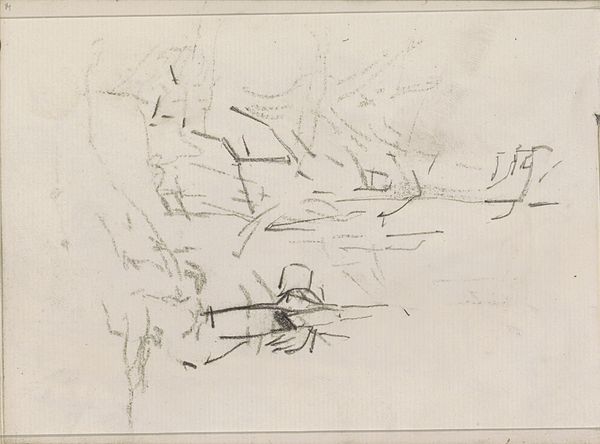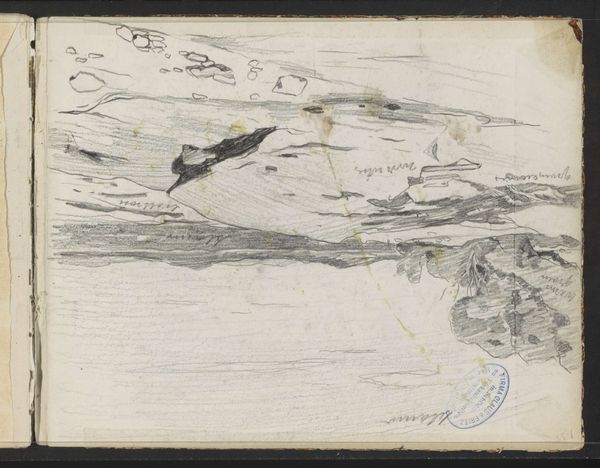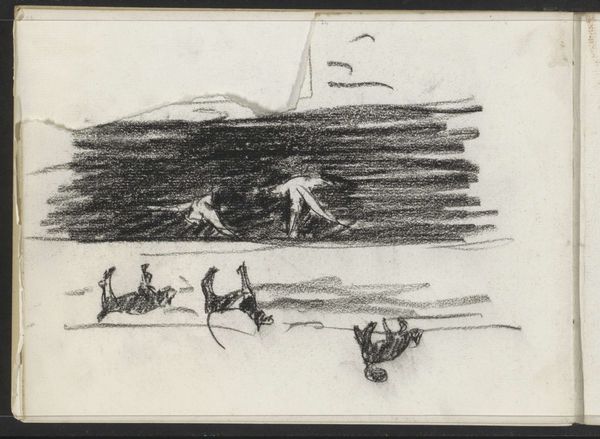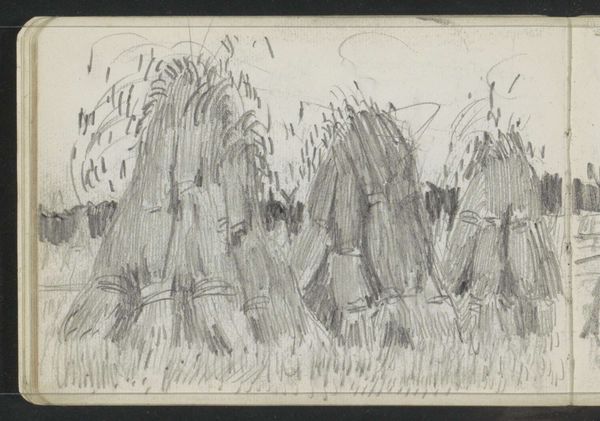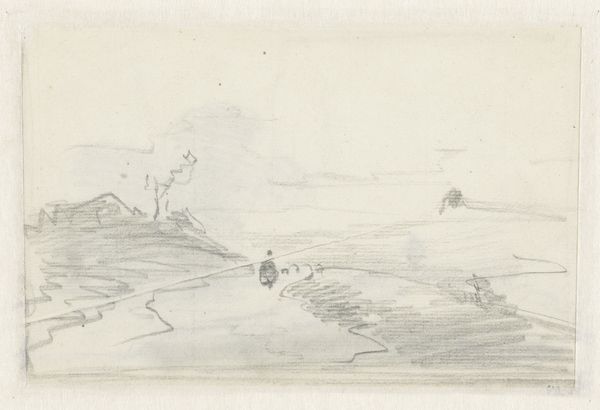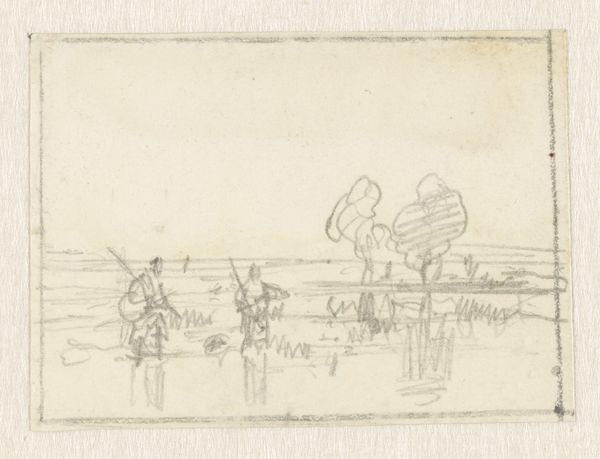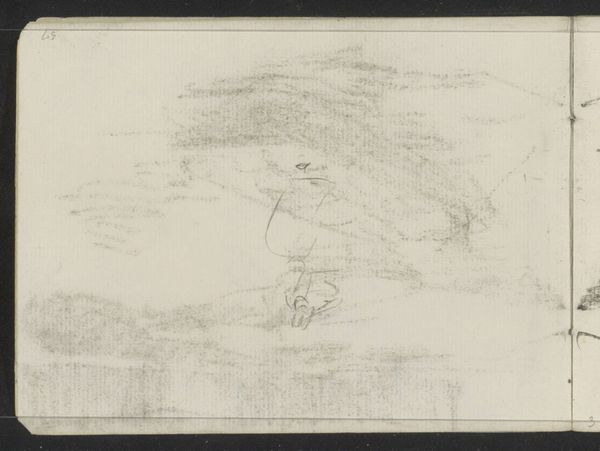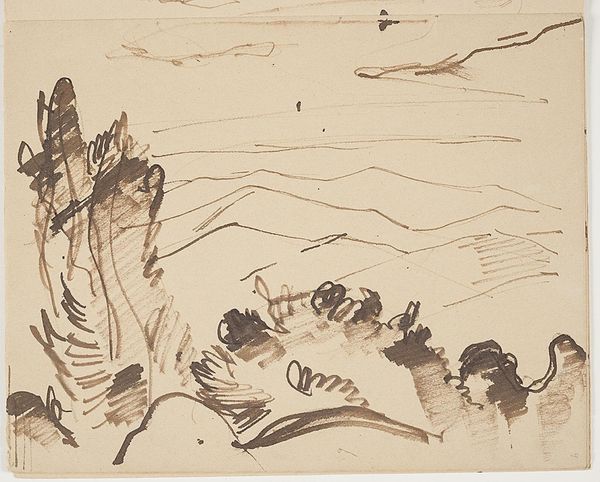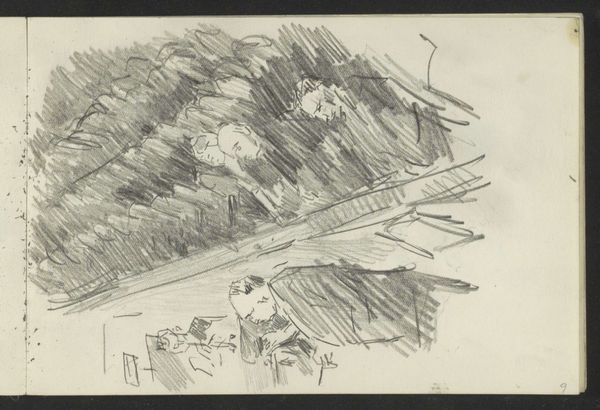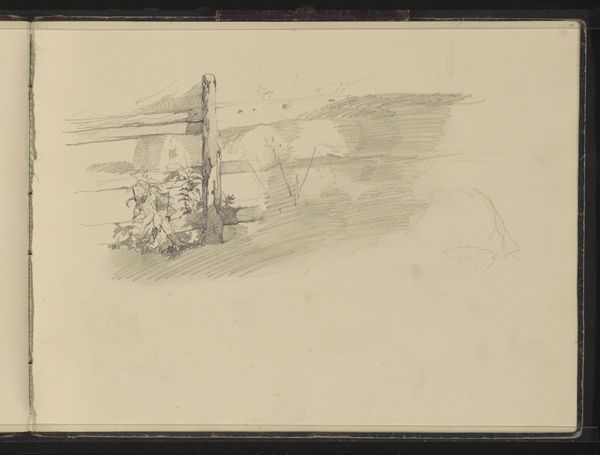
drawing, paper, ink-on-paper, ink
#
drawing
#
ink drawing
#
asian-art
#
landscape
#
paper
#
ink-on-paper
#
ink
#
orientalism
#
china
#
line
#
realism
Dimensions: 260 1/16 x 12 7/8 in. (660.56 x 32.7 cm) (image)330 5/16 x 13 3/8 in. (839 x 33.97 cm) (overall, without roller)
Copyright: Public Domain
Curator: Here we have "Bamboo Landscape," a drawing of unknown date by Zhu Sheng, rendered in ink on paper. Editor: Immediately, the composition strikes me—the strong diagonals of the bamboo contrast sharply with the softer washes used to depict the landforms. It feels dynamic, almost agitated. Curator: It’s fascinating how Zhu Sheng uses ink not just as a pigment, but almost as a structural material itself. Consider the very nature of ink-making. The grinding of the inkstick, the water added, and then the brushstrokes laid down on the paper, each a mark of labor. The artist's control over the fluidity creates this contrast between the detailed bamboo and the suggestive mountains. Editor: Yes, but it's also about the tonal range he achieves. From the dense blacks of the bamboo leaves to the faint greys suggesting distant peaks, there's a wonderful interplay of light and shadow that creates depth, wouldn’t you agree? The semiotic reading practically presents itself—dark/light, near/far, substantial/ephemeral. Curator: Certainly, that formal analysis works. But I wonder about the cultural consumption aspect too. Was this a commodity produced for a wealthy patron? How did its creation reflect or perhaps critique social values regarding labor, nature, and artistry? And what does that stark negative space—that blank paper—represent materially? Is it a comment on abundance or scarcity in the process of creation? Editor: A compelling question. From a visual standpoint, though, the blank space seems strategically placed. It emphasizes the stark beauty of the bamboo, doesn't it? And, stylistically, there is this compelling realism, despite the free brushwork, a certain attempt to present the scenery as-is, reflecting on the artist intention and perspective. Curator: All intertwined, I think. These formal choices certainly affected this work's role in Chinese society and continue to affect its interpretation today. It's that convergence of meaning and method I find so compelling. Editor: Absolutely. Analyzing the relationship between composition and production methods does offer such a fuller picture. This focused visual analysis just adds a new layer of complexity to the art’s significance.
Comments
minneapolisinstituteofart over 1 year ago
⋮
One technique commonly used in the flower-and-bird painting tradition is daoyun, a reverse-saturation method in which the flowers or plants are left as negative space—areas of white against an ink-wash ground. The method emerged from painters’ attempts to capture the brilliant whiteness of blossoms and plants in moonlight—or in winter, as seen in this scroll.
Join the conversation
Join millions of artists and users on Artera today and experience the ultimate creative platform.

